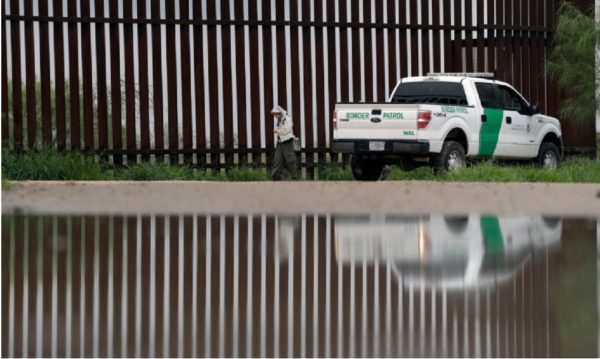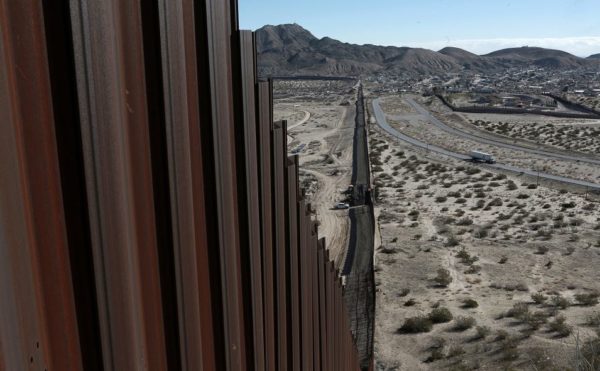“Remain in Mexico” Will Impact Nicaraguan Asylum Seekers

Experts say that Nicaraguan families hoping for asylum in the US now need to be better prepared economically and emotionally to survive in Mexico for the time needed to process their cases.
HAVANA TIMES – The governments of Joe Biden and Manuel Lopez Obrador have agreed to reactivate the “remain in Mexico” policy for asylum seekers arriving at the US border. The policy, which will be rolled out beginning on December 6th, forces migrants to wait on Mexican soil for resolution of their requests for political asylum. This means that the thousands of Nicaraguans who are currently leaving the country will confront a new challenge and a cumbersome process to be able to enter the United States. That was the conclusion of several immigration experts.
How will the reactivation of that program specifically affect the Nicaraguan migrants? Experts warned that families should be better prepared economically and emotionally to subsist in Mexico, for the time needed to have their asylum applications processed.
Haydee Castillo, a sociologist and human rights activist currently exiled in the United States, explained that with this measure Nicaraguans who enter US territory irregularly will no longer be sent to detention centers in that country. Instead, they will be returned to Mexico to pursue their asylum claims, a process that could take months or even years. Families will have to find the economic, health and humanitarian resources they need during their stay in that country.
“I‘ve heard from Nicaraguans who waited up to 19 months on the border with no help at all, before they were admitted for their asylum hearing. Because of that, the program (established by former US president Donald Trump) was harshly criticized by human rights organizations. It left the immigrants very vulnerable to violence, kidnappings, human trafficking and other dangers in the cities where they camped out while awaiting their hearings,” Castillo noted.
Parallel realities
Nonetheless, the reality among Nicaraguans is different. In order to cover the expenses of the dangerous journey to the United States, many sell all their belongings. Others come bearing a heavy load of debt that they took on to assure their passage. Very few have enough money for a prolonged stay in Mexico.
Experts added that the migrants’ desperation to cross over into North America renders them more vulnerable to “coyotes’” who offer to help with illegal immigration. This, in turn, can expose them to the threat of kidnapping.
“Miguel’ is a 33-year-old Nicaraguan who left his home on December 2nd, leaving behind his wife and four young children. Although he’s aware of the new measures the US and Mexican governments have agreed upon, he doesn’t know how long the process of seeking asylum could last once he turns himself in to the immigration authorities.
“He told me that if they returned him to Mexico, he’d work there while his asylum request is being approved. Truthfully, I was unaware that the process could take up to a year. My husband left only with the hand and protection of God. He doesn’t know anyone in Mexico. The idea was that once he turned himself in to the US immigration authorities, he could call a US resident, who is the person that will sponsor him,” recounted his wife.
Attorney Astrid Montealegre, Supervisor and Legal Adviser for the Nicaraguan-American Human Rights Alliance (NAHRA), stated that this measure would have a “direct impact” on the Nicaraguan migrants, who will now need enough resources to survive in Mexico. There too, they could encounter poor treatment.
“The program directly impacts Nicaraguans, because it requires them to amass the [economic] resources to remain in Mexico during their legal processes. They should be psychologically and emotionally prepared to face xenophobia, economic exploitation, and harassment from paramilitaries in the Mexican territory,” Montealegre declared.
As advice, she noted that the most important thing is for families to have a support network and plan that includes legal counsel.
Provisions of the agreement
The new agreement between the US and Mexico forces asylum seekers to wait on Mexican soil while their cases are under review by the US immigration authorities.
Immigration authorities declared that the program, officially known as “Migrant Protection Protocols”, will be rolled out gradually, beginning Monday, December 6.
The controversial program was established in 2019, under the administration of former president Donald Trump. However, the reactivation is expected to include certain changes. “Mexico has demanded a series of humanitarian improvements as their condition for accepting those registered,” stated a US official. According to The Washington Post, these conditions include guarantees that the asylum seekers have access to legal counsel, and that their humanitarian petitions will be processed within 180 days.

Joe Biden himself called the program inhumane and rapidly terminated it after assuming office. Unfortunately, Republicans in Texas and Missouri then sued the administration in federal court and in August obtained a legal order forcing them to reactivate the program.
Haydee Castillo stated that, according to what she knew, before a migrant could be enrolled in the program, they would have the opportunity to state whether their case was one of political persecution or of credible fear. “For that reason, it’s important to have the necessary evidence to support a case of political asylum,” she noted.
Another question is what will happen with those who are currently detained in one of the US detention centers? Will they be taken to Mexico while their requests are being resolved? The NAHRA attorney explained that beginning Monday that decision will be left to the judgement of the deportation officials.
“If there are people in the detention centers, it’s at the discretion of the official to deport that person to Mexico or not. The fact that they’re in the United States doesn’t assure that they’re going to stay there while their legal status is in process. Beginning Monday, they run the risk of being returned to Mexico,” she warned.
Nicaraguans in exile
The exodus of Nicaraguan has greatly increased since 2018, in the wake of the brutal repression of the protesting citizens that the Ortega dictatorship carried out. In 2021, that flow of migration increased enormously after the wave of abductions and arbitrary imprisonment of political and grassroots leaders that opposed the regime. The lack of work opportunities and the economic crisis were additional aggravating factors.
Costa Rica has historically been the first destination of choice for Nicaraguans having to flee the country. However, the last few months have seen a rapidly accelerating migratory flow northward. The Nunca + [Never again] Human Rights Collective recently stated that between January and November of this year, at least 95,000 Nicaraguans had left the country, the majority heading for the United States.
Given this difficult panorama, Castillo emphasized that together with other organizations, she intended to continue insisting that the United States accord Special Protective Status to the Nicaraguans who have left the country due to the repression of the Ortega regime.
“Meanwhile, the best thing that could happen to Nicaraguans is that we all unite in one national bloc to be rid of the Ortega Murillo dictatorship. Only in that way can Nicaragua advance towards a new political and economic system that can offer equal opportunities, and so we can enjoy a lasting peace that includes access to an income and the means to live a decent life without having to leave Nicaragua,” the activist reflected.






Just think about the enormous sums of money that all those immigrants borrow to try to enter the United States illegally – why don’t they organize that money and all those people to get rid of the dictatorships in their countries or try to start a small business? Those huge, organized caravans could be huge protests, huge armies, huge hunger strikes, huge work strikes and huge pressure on those dictatorships to leave!